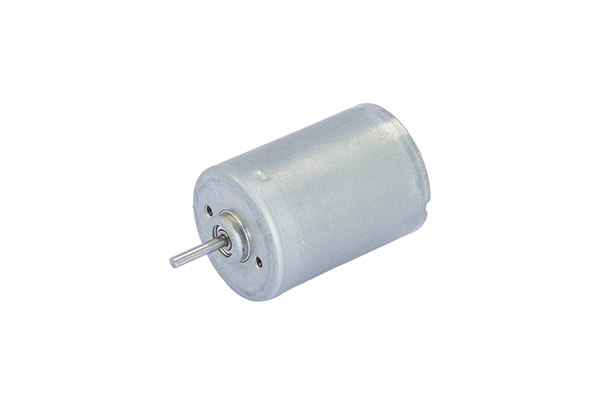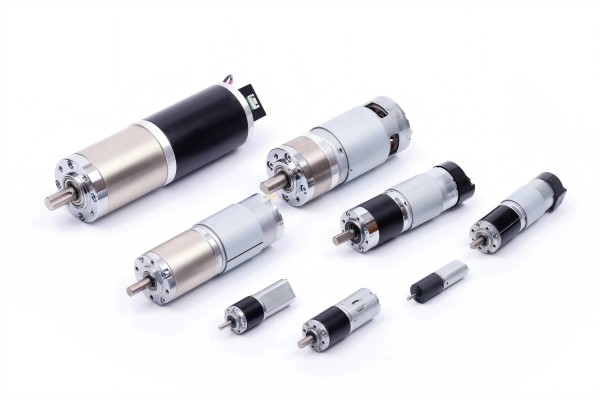In the world of motion control and industrial automation, motors are at the heart of nearly every mechanical system. Whether it’s in a conveyor belt, an electric vehicle, a household appliance, or an industrial robot, motors convert electrical energy into mechanical motion. However, not all motors are created equal. Two commonly discussed terms are “regular motor” and “gear motor.”
As a gear motor manufacturer, we often hear this question from our customers: “What’s the difference between a gear motor and a regular motor?” In this article, we break down the key differences, clarify the roles of each, and help you determine which motor type best fits your application needs.

What Is a Regular Motor?
Often called a standard electric motor, a regular motor is an electromechanical device that transforms electrical energy into mechanical energy for rotation. This rotation can be used directly in applications where the required torque and speed are within the motor’s native output capabilities.
Types of regular motors include:
- AC motors (induction motors, synchronous motors)
- DC motors (brushed, brushless)
- Stepper motors
- Servo motors
These motors usually output high rotational speeds (RPMs) and relatively low torque. If high torque or specific speed control is needed, additional components such as gearboxes or speed reducers must be used separately.

What Is a Gear Motor?
An integrated device that combines a motor and a gearbox or gear reducer is called a gear motor. The purpose of this integration is to reduce the motor’s speed (RPM) and increase its torque output, making it more suitable for applications that require controlled, high-torque motion.
A gear motor typically consists of:
- The motor unit (AC, DC, brushless, etc.)
- A gear train (spur, helical, planetary, worm gears)
- An output shaft with modified speed and torque
The amount that speed is reduced and torque is increased depends on the gear reduction ratio.
Structural Differences
Let’s break down the structural differences:
| Feature | Regular Motor | Gear Motor |
| Components | Rotor, stator, housing, shaft | Motor + integrated gearbox |
| Torque Output | Lower torque, higher RPM | Higher torque, lower RPM |
| Speed Control | Needs separate controller | Built-in mechanical speed reduction |
| Size | More compact | Slightly larger due to gearhead |
| Complexity | Simple unit | Composite of motor + gearbox |
| Mounting | May need extra coupling or reducer | Mounts directly into equipment |
Gear motors simplify the overall system design by removing the need for external gear reducers or pulleys.
Working Principle Comparison
Regular Motor Working Principle
In a conventional motor, rotational motion is produced by the interaction of the rotor’s current and the stator’s magnetic field. For instance:
- Electromagnetic induction induces current in the rotor of AC induction motors.
- In DC motors, a current is directly supplied to the rotor via brushes or controllers.
- These motors typically operate at speeds of 1,000–10,000 RPM, depending on the type and voltage.
Gear Motor Working Principle
A gear motor uses the same motor principle as above but adds a gear train on the output shaft. The gears reduce the speed and proportionally increase the torque. For example:
- A 10:1 gear ratio reduces a 3,000 RPM motor to 300 RPM but increases torque tenfold (minus efficiency losses).
This makes gear motors suitable for driving heavy loads at controlled speeds.
Advantages of Gear Motors
As a gear motor manufacturer, we highlight several distinct advantages:
Higher Torque Output
Gear reduction allows small motors to produce much higher torque, which is critical in high-load applications.
Speed Reduction
Gear motors allow precise control of output speed, important in automation and conveyor systems.
Compact Design
Integrating the gearbox eliminates the need for additional couplings or external reducers, saving space and simplifying assembly.
Greater Energy Efficiency
By matching the torque and speed requirements directly to the application, gear motors prevent energy waste that occurs when using oversized motors.
Customizability
Manufacturers can offer gear motors in various configurations—right-angle, inline, planetary, worm gear types—to meet specific installation needs.
Applications: Where Each Is Used
Regular Motor Applications
Regular motors are suitable for:
- Fans and blowers
- Pumps
- Centrifuges
- Tools requiring high speed (e.g., drills)
- Electric vehicles (as drive motors)
These applications typically benefit from high RPM and low torque requirements.
Gear Motor Applications
Gear motors are preferred in:
- Conveyor systems
- Packaging machines
- Automated doors
- Robotics and AGVs
- Automotive seat adjusters and window actuators
- Industrial mixers
- HVAC damper actuators
Where controlled, slow-speed, high-torque motion is necessary, gear motors are the ideal choice.
Cost Considerations
Regular Motors
- Usually less expensive in terms of unit price.
- May require additional components like reducers, couplings, or control systems.
- Better for high-speed, low-torque applications.
Gear Motors
- Slightly higher upfront cost due to integrated gearbox.
- Offers lower overall system cost when accounting for reduced parts, space, and maintenance.
- Provides a ready-to-install solution.
Maintenance & Durability
Regular Motors
- Fewer components mean lower mechanical wear.
- Brushless DC and induction motors require little maintenance.
- If used with external gear reducers, those need separate service.
Gear Motors
- Gears experience wear over time, especially in high-load applications.
- High-quality gear motors (with hardened gears and sealed housings) can operate for years with minimal maintenance.
- Choosing lubricated and sealed gear units minimizes downtime.
Selection Criteria: Which One Do You Need?
This is a brief guide to help you decide between a standard motor and a gear motor:
| Requirement | Recommended Motor Type |
| High-speed application | Regular motor |
| High-torque, low-speed | Gear motor |
| Space constraints | Gear motor with compact design |
| Budget priority | Regular motor with external gearing (if feasible) |
| Plug-and-play integration | Gear motor |
| Frequent stop-start motion | Gear motor (with geared-down RPM for durability) |
| Precision positioning | Gear motor (especially if combined with encoder/servo) |
If you’re unsure, working with a gear motor manufacturer (like us) can help you analyze your mechanical loads and suggest the ideal motor-gear ratio for efficiency and longevity.
Emerging Trends in Gear Motor Design
As industries evolve, gear motors are seeing major innovations:
- Miniaturized gear motors for compact consumer electronics and medical devices
- Integrated encoder and controller gear motors for plug-and-play automation
- Planetary gear motors offering higher torque in smaller packages
- Brushless DC gear motors for more accurate control and a longer lifespan
- Inbuilt sensors in smart gear motors allow for real-time monitoring.
We continually develop and customize gear motors that meet the rising demands of automation, electrification, and sustainability.
Regular motors are best for high-speed applications with low torque demands. In contrast, gear motors offer a complete drive solution by combining a motor with a gearbox to deliver lower speeds and higher torque in a compact, integrated package.
As a gear motor manufacturer, we see firsthand how the right motor choice can improve system performance, save space, reduce maintenance, and increase energy efficiency. Whether you are designing automation equipment, electric vehicles, or industrial machinery, understanding the difference between a gear motor and a regular motor will guide you toward smarter, more reliable motion control solutions.
